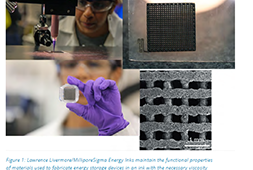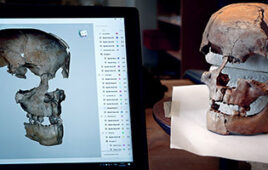
These are fluorescently-labeled protein patterns within different types of 3-D hydrogels 5.
‘3DEAL’ is a simple and inexpensive fabrication technique able to generate complex molecular patterns within soft matter, such as hydrogels, with microscale resolution and up to centimetres in depth.
This capacity enables the possibility to engineer 3D hydrogel environments with spatial control of the chemical composition, opening the opportunity to recreate biological scenarios such as 3D molecular gradients or patterns. This could be used to design new drug screening platforms or build complex tissue engineered constructs.
The research was published in Advanced Functional Materials.
Lead researcher Professor Alvaro Mata, from Queen Mary’s School of Engineering and Materials Science, said: “The human body is largely made up of anisotropic, hierarchical, and mostly three dimensional structures. New ways to fabricate environments that can recreate physical and chemical features of such structures would have important implications in the way more efficient drugs are developed or more functional tissue and organ constructs can be engineered.”
The key design feature of 3DEAL is the use of an electrical field and a porous mask, which can be used to move and specifically localize multiple types of molecules within hydrogels with microscale resolution and within large volumes.
Gastón Primo, PhD student at Queen Mary and co-author of the paper, said: “A major advantage of the technique is its robustness and cost-effectiveness. It is simple and can be used with different types of readily available hydrogels and be patterned with different types of molecules.”
The researchers hope to create variations of the technique to enable even more complex patterning as well as focus on specific applications in tissue engineering and relevant in vitro models for biological studies.
Dietmar Hutmacher, an expert in Regenerative Medicine Science and Engineering from Queensland University of Technology, said of the research: “Fabrication of biomimetic and anisotropic hydrogels exhibiting direction-dependent structure and properties has attracted great interest in the scientific community. The Mata lab has widened the toolbox with this innovative 3DEAL technology.”




